CLASSIC GRAPES 101 – RED CABERNET SAUVIGNON
For many wine drinkers, experts and novices alike, Cabernet Sauvignon wines symbolize what a red wine should be. Unfortunately, such a consensus, while comforting, is a bit deceiving. As with wines made from any varietal there can be some common, expected elements that distinguish the grape, but rarely define the wine made from it. The multitudes of variables that affect the final product include, but not are limited to, geography, weather, terroir, manipulation and predilections of individual producers. That said, what could we say about Cabernet Sauvignon that will serve as a template for interpretation? Fortunately, quite a bit!
The grape is a chance crossing of Sauvignon Blanc and Cabernet Franc in the 1600s. Cabernet Sauvignon does possess characteristics that make it unique among wine grapes. It is an easy grape to grow and harvest. A robust vine and skin structure allow it to survive spring frosts and the hardiest of winters. This thick-skinned (and predictably highly tannic) grape’s major flaw, if it can be considered one, is that it produces relatively low yields compared to other grapes. That said, what it does produce arguably has the greatest aging potential of any red grape. This potential is increased when the wine is fermented or aged in wood; which is quite common for this grape. All in all, Cabernet Sauvignon is an affable grape, quite different in temperament from say, the petulant Pinot Noir. Its positive personality has helped it develop a universal following experienced by few grapes. Indeed, the pantheon is a bit bare save for Chardonnay, Riesling, Merlot, and Pinot Noir. A true globetrotter, the grape resides in almost every corner of the world including the United States, France, Italy, Spain, Portugal, Australia, New Zealand, Israel, Chile, and South Africa.
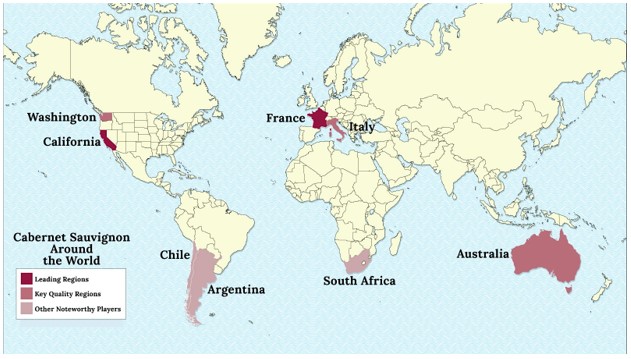
Some say that Cabernet Sauvignon reaches its zenith in the wines of Bordeaux, France. The grape does express magic in this region that is unlike any other. Myths and hyperbole aside, wines from Bordeaux can range from simple and rustic to sublime and incomparable. For a host of reasons, over the centuries these wines have created the benchmark by which most other wines are judged. And in many cases, their prices have influenced other regions to follow suit! Some of the most prestigious wine names in the world have addresses here: Cos d’Estournel, Calon Segur, Lafite-Rothschild, Mouton-Rothschild, Ch. Margaux, Palmer, Lynch-Bages, Branaire-Ducru, Léoville-Barton, Talbot and Ducru-Beaucaillou to name a few. In Bordeaux, Cabernet Sauvignon is often blended with other grapes to create what is often known as the classic Bordeaux Blend: Cabernet Sauvignon, Cabernet Franc, Merlot, Malbec, and Petit Verdot.
This blend inspired a group of California vintners in 1988 to develop the concept of Meritage wines. Their goal was to establish a name and set of standards for American wines that were made from a blend of the traditional French Bordeaux grapes. Though it sounds French, it is actually an invented English word that is a compound of merit and heritage. When spoken, the word Meritage rhymes with heritage. No French accent affectation, please! Per the Meritage Alliance, a red Meritage wine is an American wine that emulates a classic Bordeaux style by using a combination of two or more of the following grapes: Cabernet Sauvignon, Cabernet Franc, Merlot, Malbec, Petit Verdot & Carménère. A white Meritage is any combo of Sauvignon Blanc, Muscadelle & Semillon.) American winemakers are not trying to reproduce great Bordeaux, but rather create a wine that is consistent with the spirit, style and substance of excellent wines from that region.
While Cabernet Sauvignon was imported to California in 1852, it was not until a century later, in the 1950s, that premier California wineries like Inglenook, Charles Krug and Beaulieu began making Cabernet Sauvignon wines that consistently garnered gold medals at the State Fair. California achieved international accolades when its 1973 Stag’s Leap Wine Cellars Cabernet Sauvignon won first place in a 1976 Judgement of Paris blind tasting in Paris against some of the best that France had to offer, including a 1970 Chateau Mouton-Rothschild! Since then, both prestige and prices have soared for top-end California Cabernets. Great values can still be found and carefully chosen prestige wines are worth every penny. Other states producing great interpretations of C.S. wines include Washington, Maryland, Texas, and Virginia, and North Carolina.
CABERNET SAUVIGNON PROFILE
Scents and Flavors
Blackberry Blueberry Plum Mint Oak Raspberry Bell Pepper Mushroom Truffle Cedar Green Olive Bay Leaf Vanilla Eucalyptus Black Currant Black Olive Cigar Box Tobacco Fig Black Pepper Pencil Shavings Pencil Lead Chocolate Cherry Smoke Toast Black Tea Chamomile Tea Green Tea
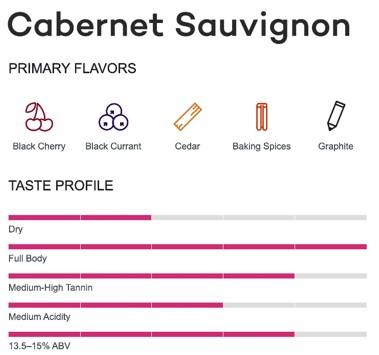
Food Affinities
Meat
Beef Veal Venison Buffalo Short Ribs Lamb Rabbit Pork Squab Prime Rib Duck Guinea Hen Goose Kidney Osso Buco Pheasant Smoked Turkey Carne Asada Bacon Sweetbreads Calf’s Liver Meat Stews Pot Roast Animal Fat Animal Protein
Vegetables, Fruits & Funghi
Eggplant Black Olives Green Olives Bell Pepper Black Currants Roasted Tomato Potatoes Bay Leaf Truffles Morels Porcini Portobello Lentils Onions Shallots
Herbs, Spices & Nuts
Walnuts Pecans Balsamic Vinegar Dijon Mustard Basil Cilantro Oregano Rosemary Thyme Dark Chocolate
Cheeses & Dairy
Camembert Gorgonzola Parmesan Aged Jack Aged Gouda Butter Compound Butters Mahon Cheddar Gruyere
Food & Wine Pairings
Meats work well with this grape because the tannins help to break down the animal proteins (and in turn the proteins help soften the fatiguing effect of the tannins). In the same vein, butter and fats work wonders and play well with Cabernet Sauvignon. (Think about an herbed butter on a Steak Frites or Bistecca al Forno with Gorgonzola.) Nuts, particularly walnuts and pecans, contain tannins that help neutralize and balance the tannins in the wine. Sauces can be simple or complex reductions and work best when they include some of the ingredients from the above categories. Because of their intensity, reduction sauces work better with younger wines. A more mature Cabernet Sauvignon has lost some of its fruit intensity and may be overwhelmed by a strong sauce. Wine weight on the palate plays a part, too. Lighter C.S. wines work well with lighter fare, while heavier (often younger, more tannic) C.S. wines work well with richer, more complex dishes; especially meat dishes that contain fat and protein that can tame the tannins and complement the weightier texture – think of the weight and texture difference between calf’s liver and a New York strip steak. Vegetarian dishes can be successful C.S. pairings – think veggie chili, mushroom risotto or ratatouille.
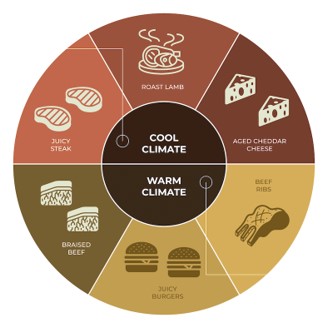
Styles
With so many growers from so many areas of the world there is a style of Cabernet Sauvignon wine to fit almost every palate and purse. Light-medium bodied styles are fruit forward, rounder, softer and less tannic. Medium-full bodied styles tend to be more tannic (often benefiting from 3-20+ years of bottle aging to soften up depending on region/producer), more concentrated, denser, less fruit forward (bottle aging will help the components cohere) and oaky.
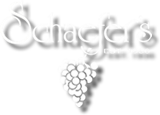

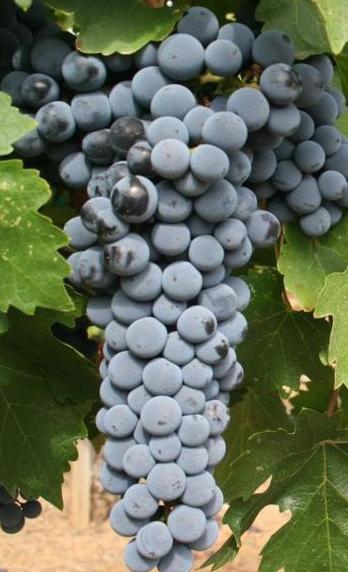

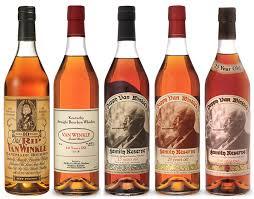




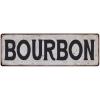

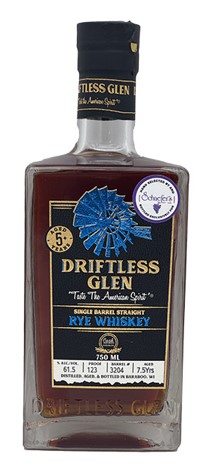

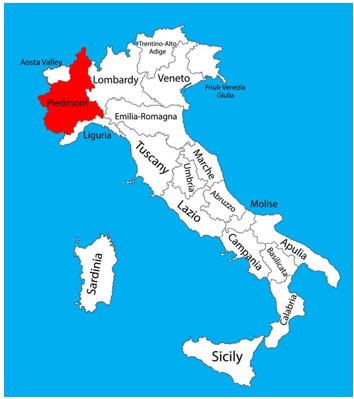
Comments